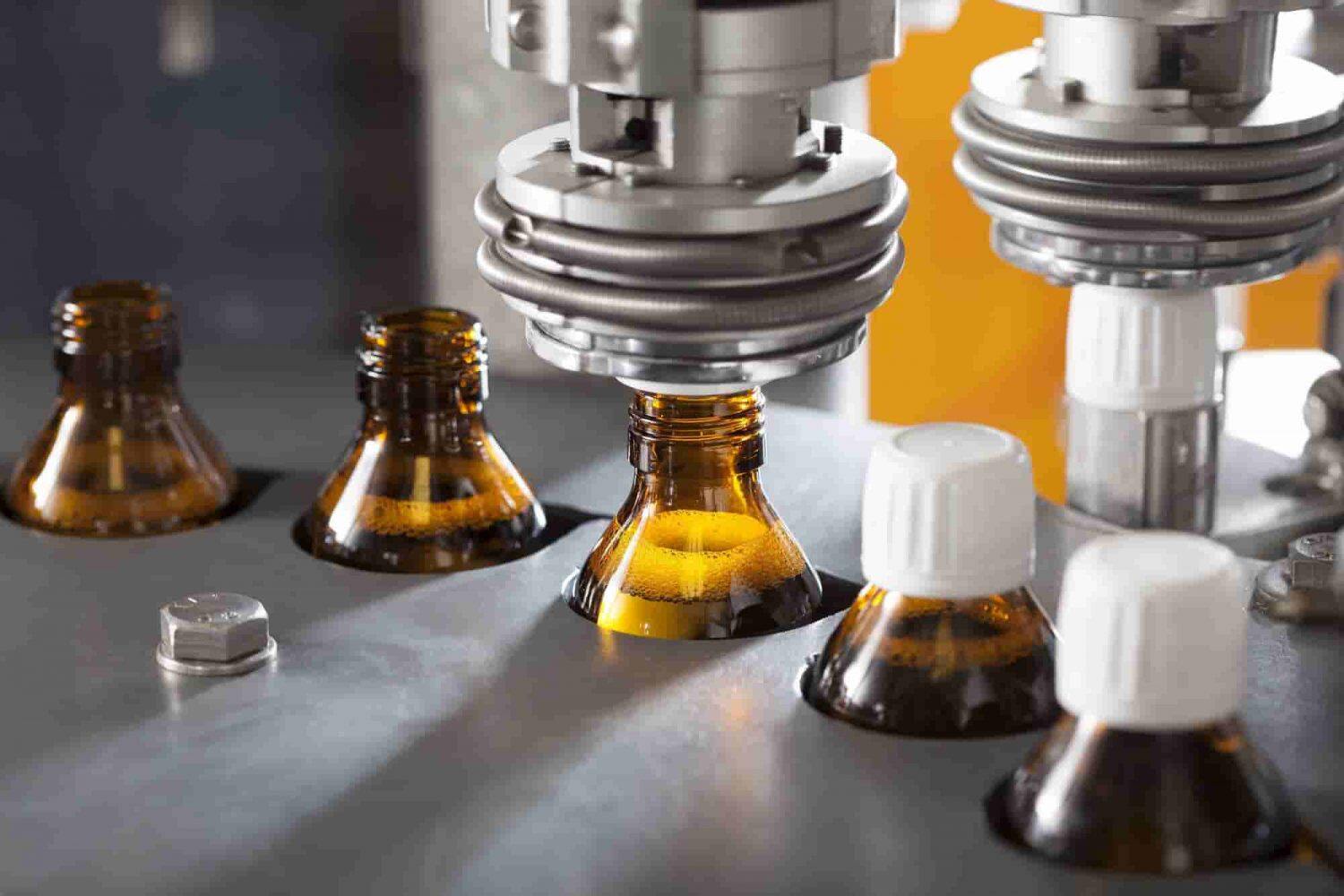
Choosing the right oral liquid filling machine can be a bit tricky, but it's absolutely worth it. An oral liquid filler is a key investment for pharmaceutical manufacturers and health supplement producers. The right choice ensures your cough syrups, supplements, or other oral liquids are bottled efficiently and safely.
Want to buy an oral liquid filling machine this year, but unsure where to start? We're here to help! In this guide, we'll explain what an oral liquid filling machine is, the types available, how to choose the best one, some of our top picks, and give you an idea of how much these machines willcost in 2025. Let's find out in the upcoming sections!
What Is an Oral Liquid Filling Machine and How Does It Work?
At its core, an oral liquid filling machine is a device that automatically fills bottles or vials with liquids. The unique point is these liquid products are meant for oral consumption, like elixirs, syrups, suspensions, or emulsions.
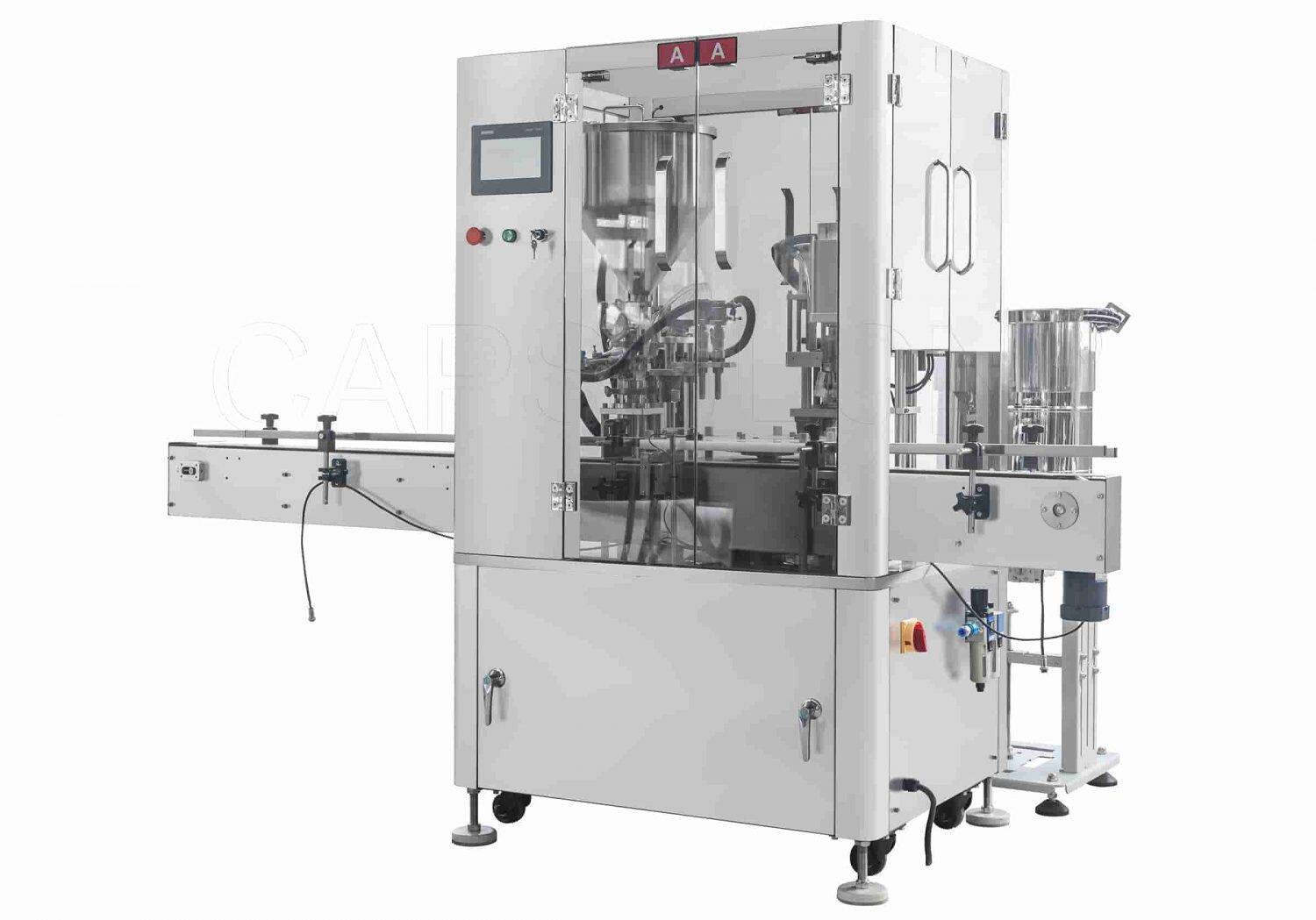
These machines are designed to fill a precise amount of liquid. Its complete packaging process also often includes sealing or capping the container.
Oral liquid filling machines are commonly used in pharmaceutical companies (for medicines), supplement factories (for liquid vitamins), and even food or beverage industries (for things like liquid flavorings or herbal drinks).
So, what makes this machine work?
An automatic oral liquid filling machine typically includes:
- A conveyor system: Moves bottles
- A set of nozzles: Fill bottles
- A pump or piston mechanism: Dispenses the liquid
- A user-friendly control panel: Sets the fill volume and speed.
In a production line, bottles are first cleaned and positioned, then the machine fills each bottle to the correct volume and caps it tightly.
Behind the scenes, different machines employ different filling mechanisms. For example, some use a piston or pump system to measure out an exact volume of liquid for each bottle. Others use gravity or vacuum to fill to a certain level.
We'll explore these methods more in the next section. The key point is that all oral liquid filling machines aim to make filling bottles easier, faster, and more precise.
Types of Oral Liquid Filling Machines
Not all oral liquid fillers are built the same. Understanding different types will help you figure out which one is the best oral liquid filling machine for your operation.
By Automation Level:
Manual Oral Liquid Filling Machines
These are hand-operated fillers with little or no electrical components. The operator manually controls the filling using a hand pump or lever.
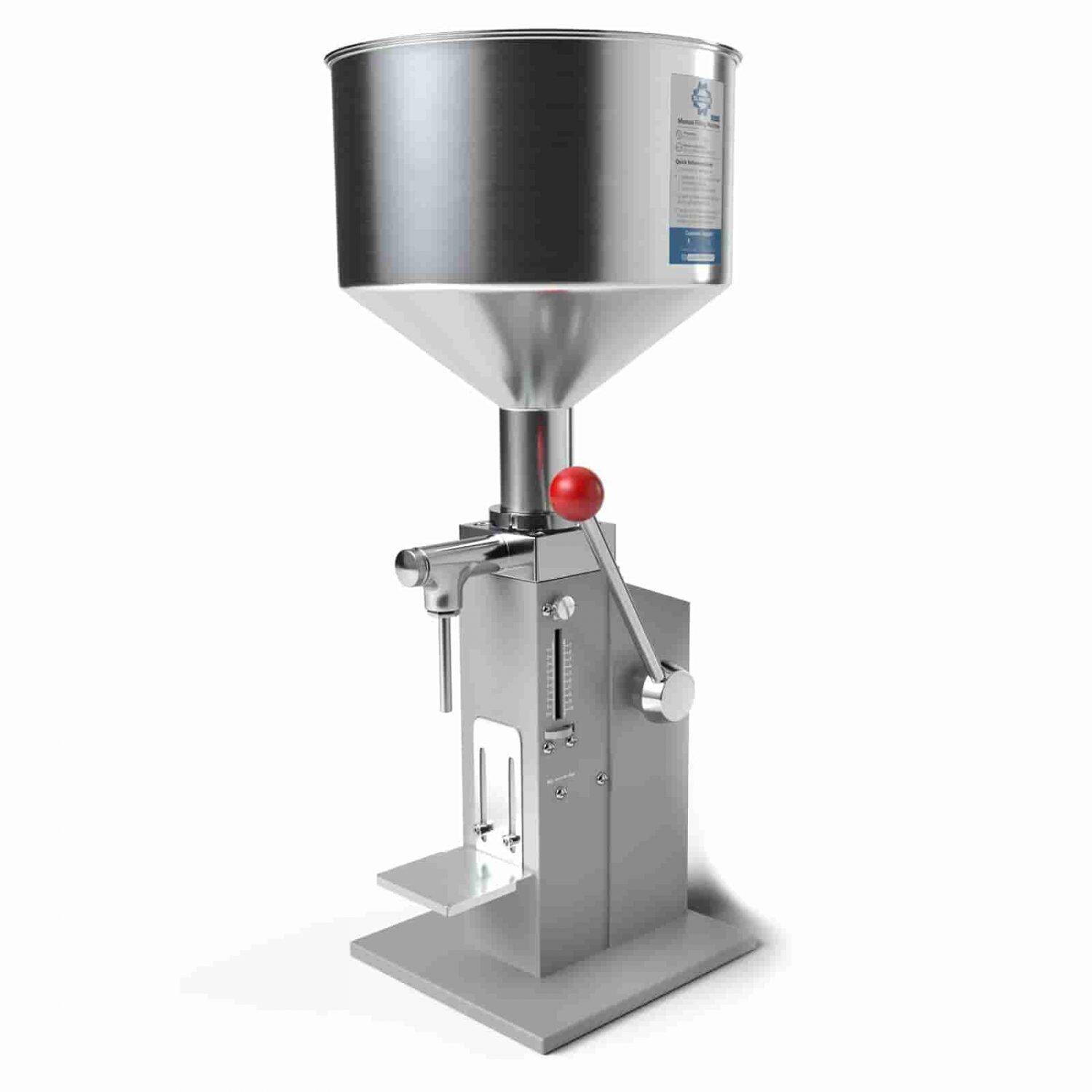
- Pros:
- Very low cost and simple to use
- No electricity needed
- Suitable for small-scale production or lab use
- Offer better accuracy and speed than completely by hand
- Cons:
- Slow throughput—not practical for more than small batches
- The filling consistency can vary depending on the operator
- Not ideal for thicker liquids or strict accuracy requirements
- Can be tiring and error-prone for large quantities
Semi-Automatic Oral Liquid Filling Machines
These machines have mechanical or electric components to assist filling but still require an operator for certain steps. They may have a foot pedal or button to activate the fill for each bottle.
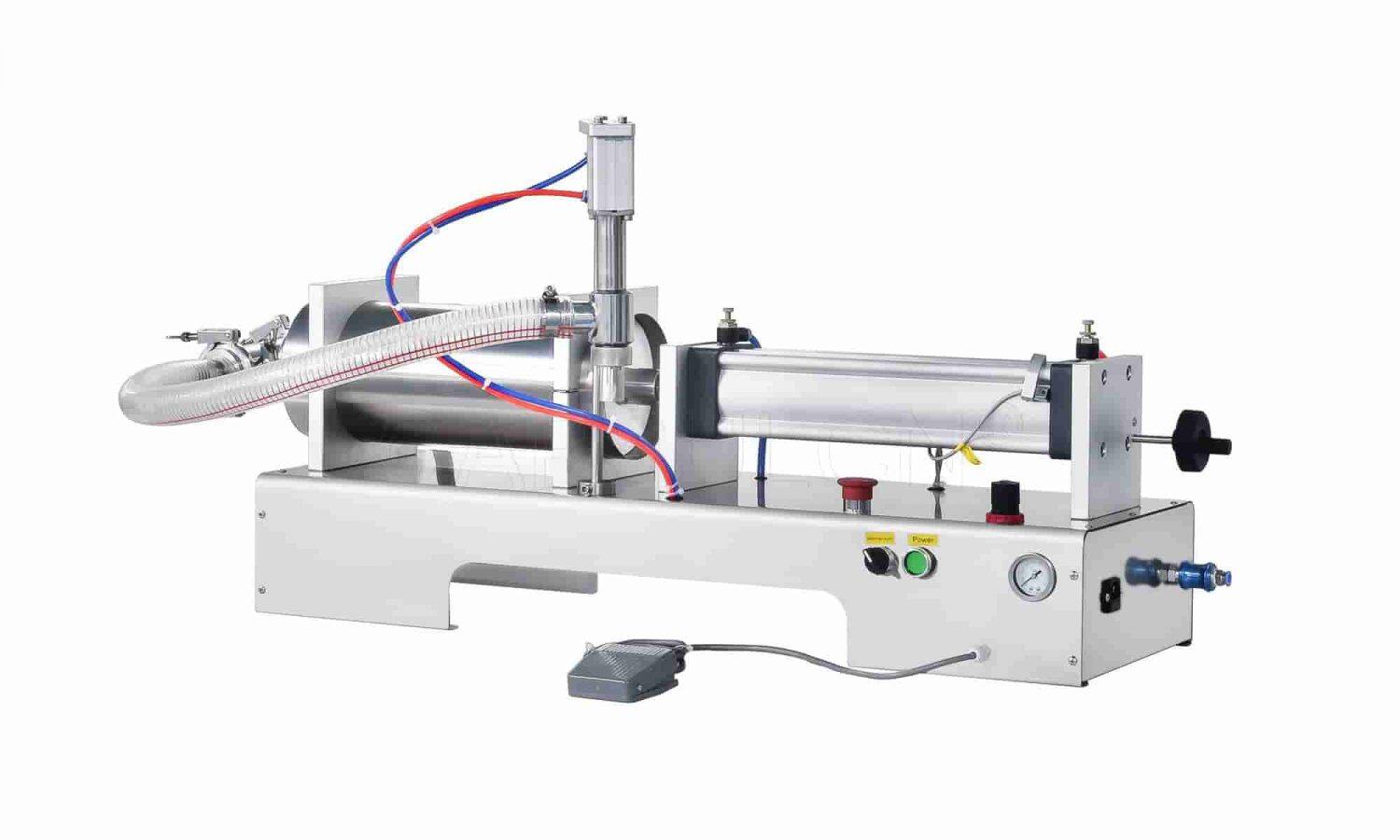
- Pros:
- Faster and more consistent than manual fillers
- Improve reliability and repeatability of fills
- Can work with various liquids and container sizes
- Suitable for small to medium production runs
- More affordable than fully automatic systems
- Cons:
- Still labor-intensive
- Not as fast as fully automated lines
- Many lack integrated features like automatic capping or labeling
Automatic Oral Liquid Filling Machines
These are fully automated filling systems. You simply supply bottles (often via an automatic feeder or conveyor), and the machine handles the rest. It fills and often caps and labels the containers.
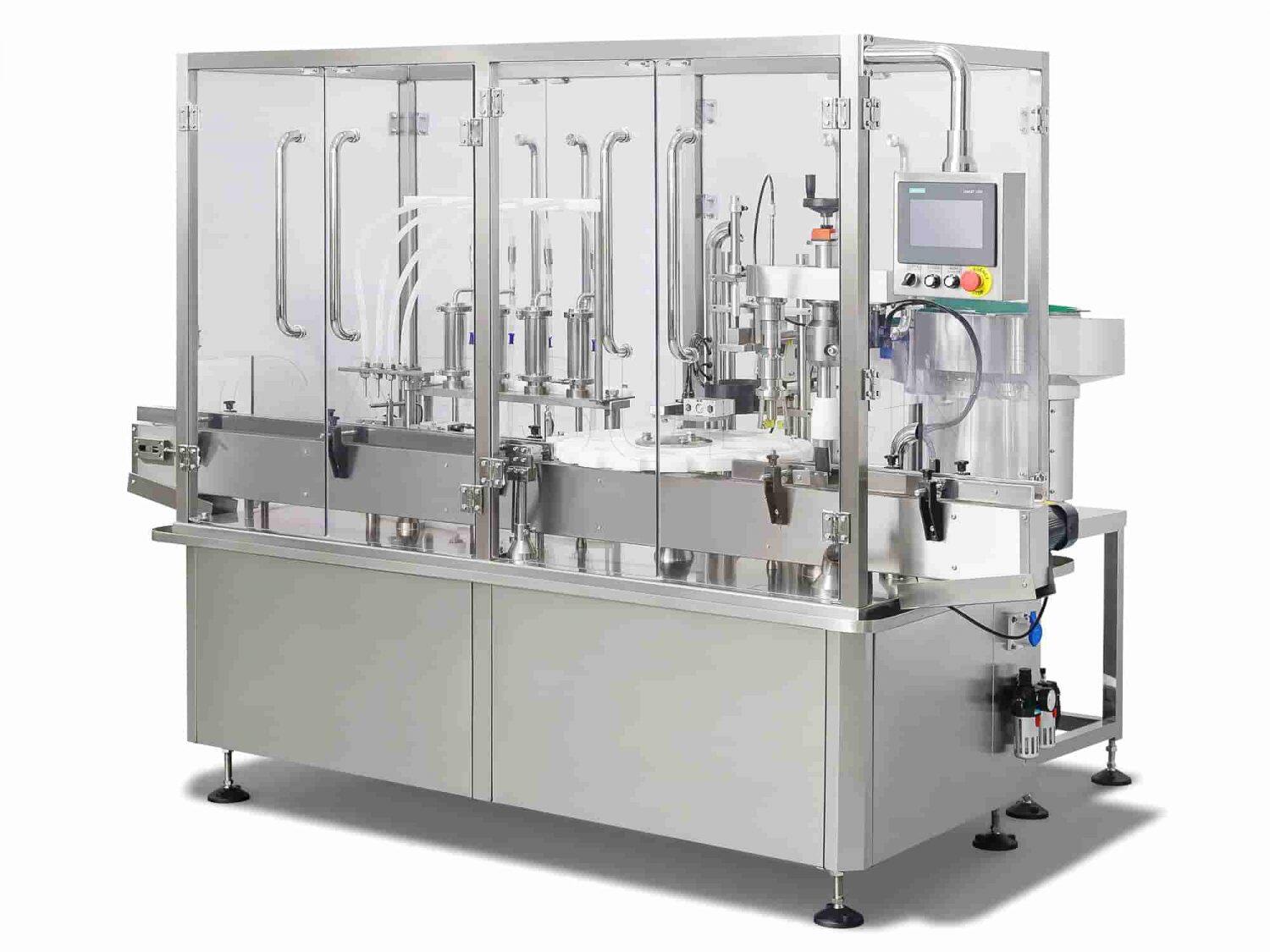
- Pros:
- Ideal for large-scale production
- Minimal human intervention needed
- Can automatically stop if there's an issue or when the batch is done.
- Often come with advanced controls to adjust on the fly
- Provide excellent fill accuracy and consistency
- Improve worker safety and product hygiene
- Cons:
- Significantly more expensive than manual or semi-automatic ones
- Require more floor space and setup
- May require more technical setup and maintenance
By Filling Method:
Volumetric (Piston/Pump/Gravity) Fillers
These machines dispense a measured volume of liquid into each bottle. A common design is a piston filler, where a piston cylinder draws in a set volume of liquid and then pushes it out into the container. Others use peristaltic pumps or rely on the force of gravity to meter out the liquid.
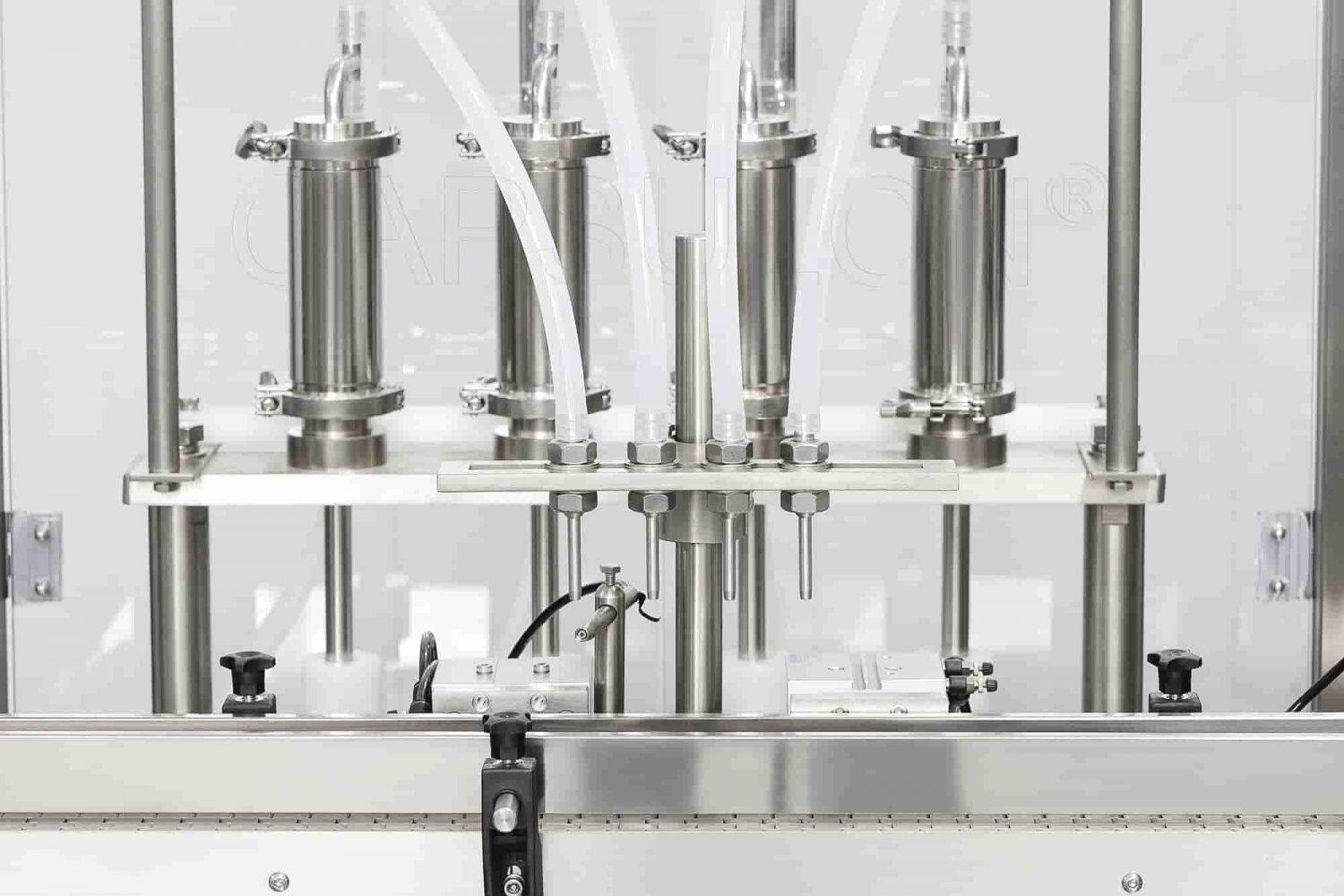
- Pros:
- Ensure each bottle gets the exact same volume of product
- Able to accommodate different liquids viscosities
- Quite versatile and can work with many container types and sizes
- Can be used in high-speed operations
- Cons:
- Bottles might not all look equally filled if there are slight differences in bottle shape or size
- Can be relatively expensive for small-scale producers
- Cleaning can be a bit more involved
Overflow Fillers
These machines fill bottles to a consistent fill line or level. They often use an overflow mechanism: the liquid is pumped into the bottle, and any excess beyond the desired fill level overflows back into a reservoir. This method ensures each bottle has the same fill height.
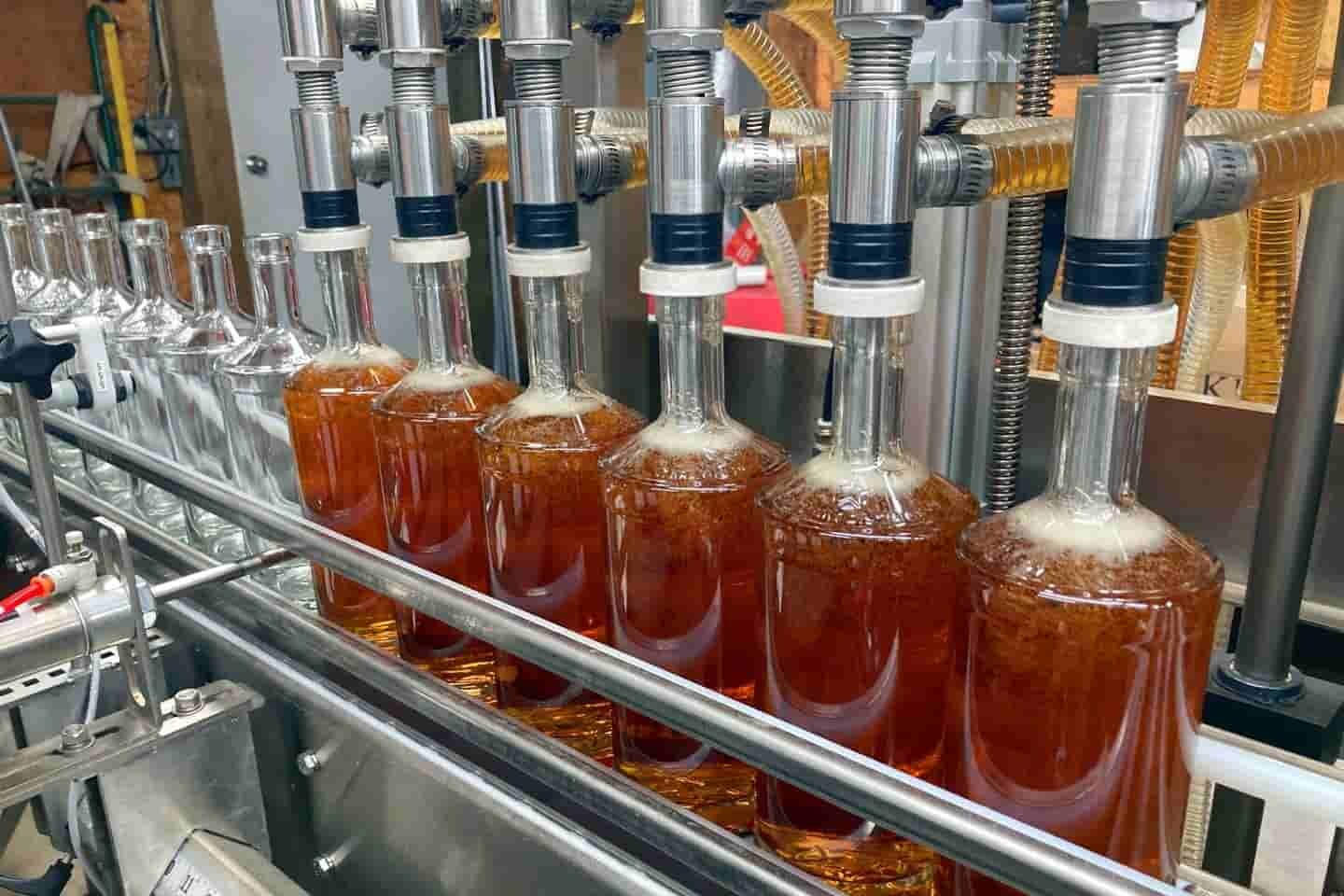
- Pros:
- Ensure every bottle looks uniformly filled
- Usually simpler and more cost-effective
- Excellent for low to medium-viscosity liquids
- Use diving filling nozzles that prevent foaming or splashing
- Automatically recycle the overflow liquid, reducing waste
- Cons:
- Not ideal for very thick or paste-like liquids
- May not be as precise in volume for each bottle
- Can be slower and less precise if not carefully calibrated
Vacuum Fillers
These oral liquid filling machines use suction to pull liquid into bottles. Instead of pushing the liquid in (like piston or pump fillers do), they create a vacuum within the bottle that draws the liquid up until it reaches a set level. Once that level is hit, the filling stops. They're especially great when you want each bottle to look exactly the same (with the same fill level, not just volume).
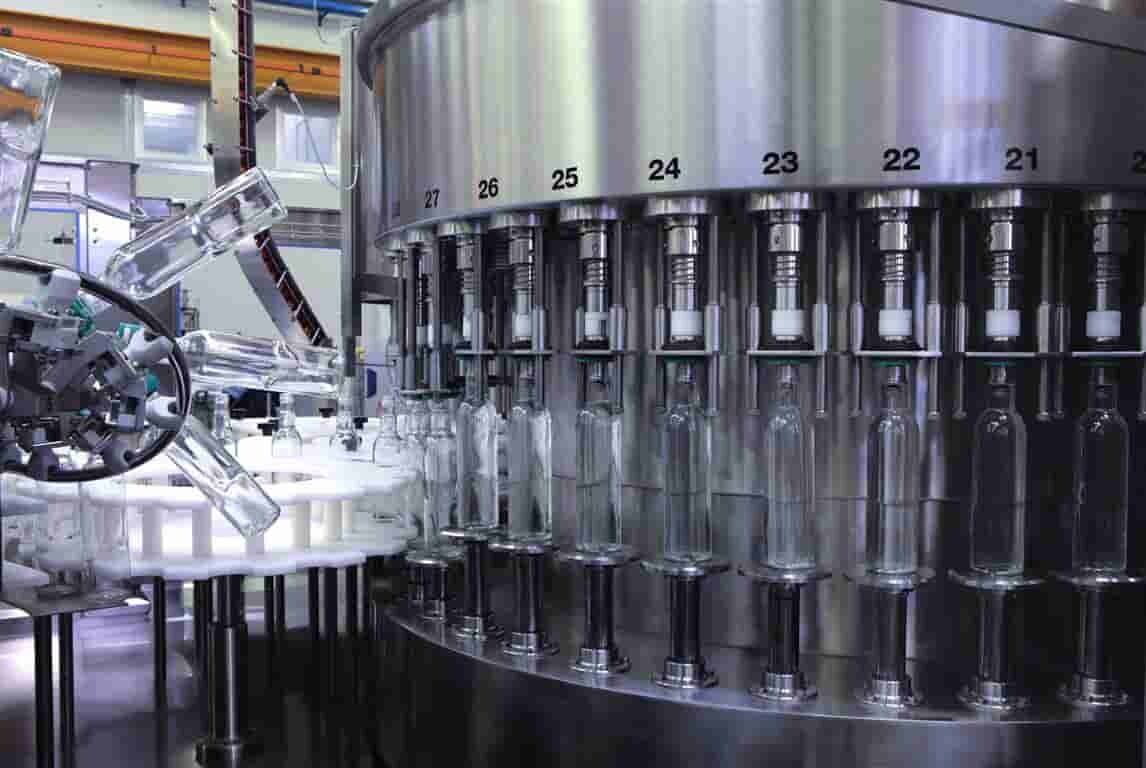
- Pros:
- Perfect fill level, great for clear containers
- Works well with water-like products
- No need for complex volume settings
- Gently fills without creating bubbles
- Often easy to use and maintain
- Cons:
- Not good for thick or viscous liquids
- Not ideal for flexible bottles, with chances of crushing them
- Slightly slower than some other methods, especially in high-speed production
Note: Many modern oral liquid filling machines combine features. For instance, an automatic machine might use volumetric piston filling and also have an overflow safeguard to prevent spills. When evaluating machine types, consider both the automation and the filling method. Understanding these options will help you pinpoint which combination suits your product best.
How to Choose the Best Oral Liquid Filling Machine
With the variety of options available, how do you narrow it down to the best oral liquid filling machine for your specific needs? Here are some key factors and tips to consider when making your decision:
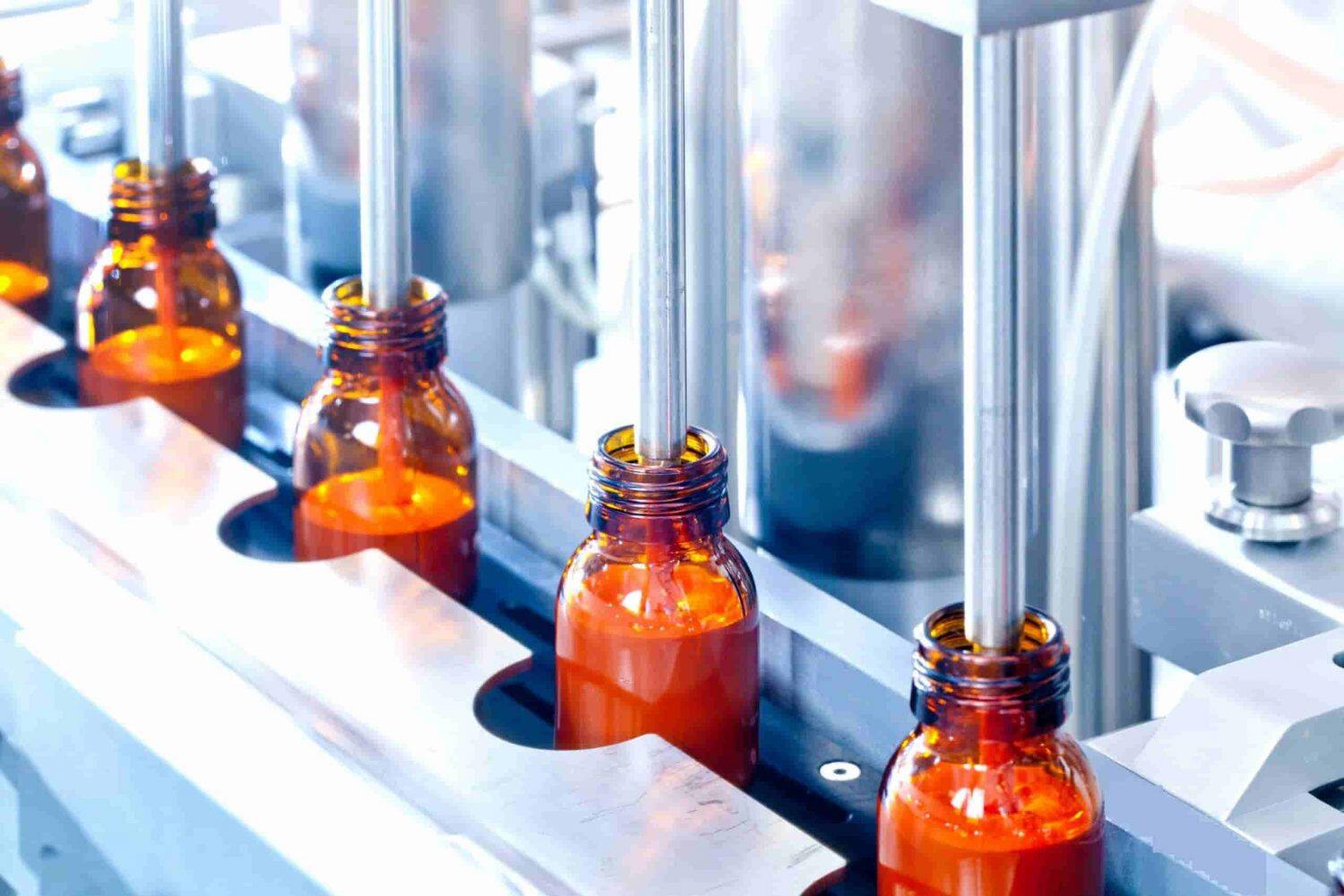
- Figure out how many you need to fill.
Large pharmaceutical factories filling thousands of bottles daily will need automatic, high-speed machines. Smaller supplement makers might be fine with semi-automatic ones. Also, consider future growth. Buying a slightly bigger machine now could save you money later.
- Think about the different bottle sizes you'll use.
Many filling machines adjust easily for different bottle heights and volumes. For example, you might fill 30ml bottles now and 100ml bottles later—ideally, one machine can handle both with minimal adjustments. Check if different parts (like nozzles) are needed.
- The type of liquid you're filling matters.
Thin liquids work well with gravity fillers; thicker, syrupy products need piston or pump fillers. If your liquid foams or drips, choose machines with special features like diving nozzles or anti-drip mechanisms. For gentle handling of sensitive liquids, peristaltic pumps are great.
- Decide how much automation you need.
Automatic machines are faster and require less labor but cost more. Semi-automatic machines are cheaper but need an operator. If labor costs and consistency matter most, investing in automation is worth it. Also, plan for training. Modern machines are easy to use but may need some initial training or ongoing technical support.
- Prices for filling machines vary widely.
Simple, small units may cost tens of thousands, while fully automatic lines can run into hundreds of thousands. Consider your budget carefully, but also think about total costs, including labor, maintenance, and spare parts. A cheaper machine might end up costing more in the long run if it's not efficient or easy to maintain.
- Make sure you have enough room for your machine.
Fully automatic systems usually need more space due to additional equipment like conveyors and cappers. Check electrical and air supply requirements too. Many machines need compressed air. If space is tight, a compact semi-automatic machine might be best.
- Learn regulatory and quality requirements.
In industries like pharmaceuticals and food, equipment must meet strict standards. Ensure your machine is made from suitable materials like stainless steel (304 or 316) and complies with standards like cGMP, FDA, and CE. A good machine doesn't just fill well—it also passes industry inspections easily.
- Consider extra features that make your life easier.
Is the machine easy to clean between batches? Features like Clean-in-Place (CIP) or easy disassembly help if you frequently switch products. Check if it has built-in capping and labeling units, or if those need to be added later. Look for helpful features like memory for different filling settings, anti-drip nozzles, bottle counting, and misfill rejection. Make a checklist of essential vs. optional features based on your needs.
- Finally, choose a reliable supplier.
Good machines need good support. Check if the supplier provides installation, training, and quick technical support. Availability of spare parts is critical. You don't want downtime because of a small, unavailable part. A reputable supplier will guide you in choosing the best solution.
Our Top Picks for the Best Oral Liquid Filling Machines of 2025
Huada Pharma offers a wide selection of oral liquid filling machines. Let's look at a few iconic or best-selling models.
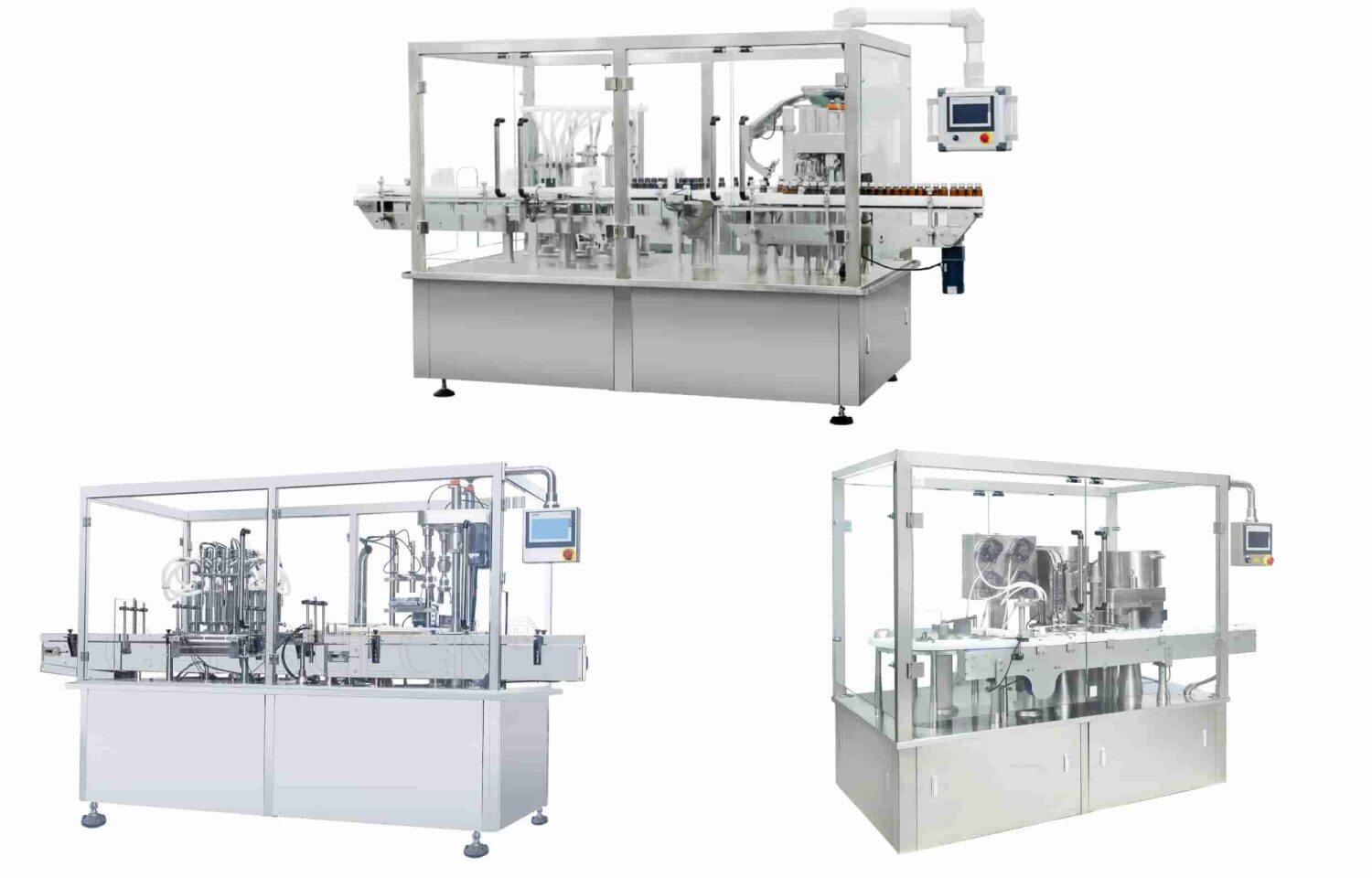
LiqCN-4 Series Piston Bottle Filling Machine
This is a heavy-duty piston filling machine designed for small to mid-sized production lines. In simpler terms, the LiqCN-4 Series can handle a wide range of liquids—from thin solutions to thick syrups or gels – making it very versatile for different oral liquid products. It's built to be user-friendly with a touch-screen interface and has safety features like a "no bottle, no fill" sensor to prevent spills.
Key Specs: (LiqCN-4 Series)
| Spec | Value |
| Filling Range | 0–100 ml; 100–500 ml; 500–1,000 ml |
| Filling Nozzles | 4 nozzles |
| Filling Accuracy | ± 2% deviation |
| Max Output Speed | ~40 bottles per minute |
| Machine Type | Piston filler (automatic) |
LiqCN-8A Series Piston Bottle Filling Machine
Think of the LiqCN-8A as the "big sibling" of the LiqCN-4. It's also a piston-driven filling machine but with eight filling heads for higher throughput. This model is great if you need more speed – it can fill up to about 80 bottles per minute at smaller volumes. Despite the higher capacity, it still maintains the flexibility to fill different volumes with minimal changeover parts.
Key Specs: (LiqCN-8A Series)
| Spec | Value |
| Filling Range | 0–100 ml, 100–500 ml, 500–1,000 ml (configurable) |
| Filling Nozzles | 8 nozzles |
| Filling Accuracy | ± 2% deviation |
| Max Output Speed | up to ~80 bottles per minute |
| Machine Type | Piston filler (automatic) |
LiqCN-4V Serum Vial Filling and Closing Monoblock
The LiqCN-4V is Huada's best-selling vial filling machine. It's a monoblock system, meaning it integrates multiple steps (filling, stoppering, and capping) into one compact machine. This model is perfect for small vials (think 10 ml supplement vials), fills them with high precision, and then immediately seals them—all in one go. The 4V is designed for pharmaceutical environments, featuring an isolation barrier for use with laminar airflow, which is great for sterile conditions.
Key Specs: (LiqCN-4V Monoblock)
| Spec | Value |
| Filling Volume Range | 0–100 ml |
| Filling Nozzles | 4 nozzles |
| Capping/Stoppering | 1 stopper inserter + 1 capping head |
| Filling Accuracy | ± 1.5% deviation |
| Max Output Speed | up to ~40 vials per minute |
| Machine Type | Monoblock (filling & capping) |
LiqCN-4MB Bottle Filling and Capping Monoblock
The LiqCN-4MB is another integrated filling-capping machine tailored for small bottles or vials up to 100 ml. What makes the 4MB stand out is its versatility with different cap types. Whether it's child-resistant caps (CRC), tamper-evident dropper caps, or even aluminum seals, this machine can handle it. It's a great choice for products like oral drops, syrups, or essential oils where you might use various bottle styles and caps.
Key Specs: (LiqCN-4MB Monoblock)
| Spec | Value |
| Filling Volume Range | 0–100 ml |
| Filling Nozzles | 4 nozzles |
| Capping Head | 1 head (for various cap types) |
| Filling Accuracy | ± 1.5% deviation |
| Max Output Speed | up to ~35 bottles per minute |
| Machine Type | Monoblock (filling & capping) |
LiqCN-12MB High-Speed Bottle Filling and Capping Monoblock
If you have a high-volume production and need something fast, the LiqCN-12MB is a beast. It's a robust monoblock machine designed to fill small bottles (around 10 ml) at blazing speeds—up to 350 bottles per minute! That's the kind of machine large pharmaceutical or nutraceutical companies might use for products like energy shots or drinkable vials. It has 12 filling nozzles and 12 capping heads working in tandem, which is how it achieves such throughput. Despite the speed, it's built to maintain accuracy and quality, with options for piston or peristaltic filling to suit the product.
Key Specs: (LiqCN-12MB Monoblock)
| Spec | Value |
| Filling Volume Range | 0–10 ml |
| Filling Nozzles | 12 nozzles |
| Capping Heads | 12 heads |
| Filling Accuracy | ± 2% deviation |
| Max Output Speed | up to ~350 bottles per minute |
| Machine Type | High-speed monoblock (filling & capping) |
What Do Oral Liquid Filling Machines Cost? (2025 Price Ranges)
Oral liquid filling machine costs in 2025 will vary widely based on the machine type, level of automation, and brand. Here's a general breakdown in USD for low-end, mid-range, and high-end machines:
- Low-End Machines (Budget-Friendly): Roughly $100 up to $5,000
At the low end, you have manual or semi-automatic filling machines. These are often tabletop units. For example, a simple manual filler (basically a controlled pump) might cost around $100-$500. A small semi-automatic piston filler can be a few hundred to a couple thousand dollars.
- Mid-Range Machines (Small to Mid-Scale Production): Approximately $5,000 to $50,000+
Mid-range covers the vast middle ground of machines that are fully automatic or high-end semi-automatic. In this bracket, you can get a good automatic oral liquid filling machine (often including capping) with reasonable speed. For instance, some automatic oral liquid fillers are advertised to be between $5k and $60k, depending on their features. Around, say, $20k-$30k, you could get a solid 4- to 8-head filler/capper that might handle 30–100 bottles per minute.
- High-End Machines (Industrial/High Production): $50,000 and up
High-end oral liquid filling machines are the ones used by large pharmaceutical companies or beverage manufacturers with mass production needs. These can easily run into six-figure prices. For example, a specialized high-speed liquid filling line can be listed around $128,000–$185,000.
KEEP IN MIND: Prices may vary based on customizations, the number of add-ons (like extra nozzles and special dosing systems), and the region (Western brands tend to be pricier than Chinese or Indian brands for similar specs). Always get a detailed quote for the exact configuration you need.
Final Word
Choosing the best oral liquid filling machine in 2025 means clearly understanding your production needs. There isn't one perfect solution for everyone.
The trick is to think about volume, bottle sizes, type of liquid, budget, space, and regulatory standards. Every machine has its strengths, and by now you probably know what matters most to you.
In short, do some research, compare different models, and don't hesitate to ask suppliers questions. With better technology and rising demand for bottled oral liquids, there's never been a better time to find or upgrade your filling machine!